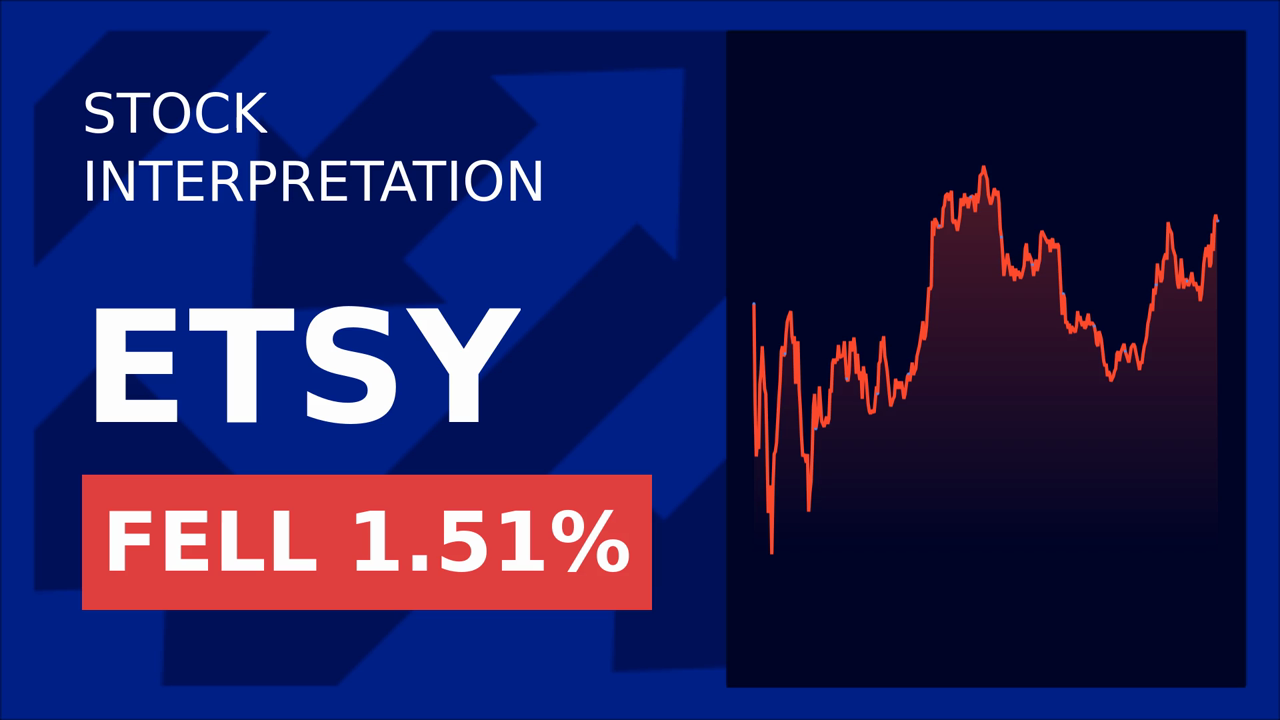Can Anything Save Etsy?
The question hanging over Etsy’s future is as stark as its recent financial performance: Can the company reverse its declining momentum, or is it destined to become a relic of the digital marketplace era? For years, Etsy has been synonymous with quirky, handmade goods and a community-driven ethos. But as its Gross Merchandise Sales (GMS) dropped 4% in 2024—the fourth straight year of decline—the writing on the wall is hard to ignore.
The Numbers Tell a Troubling Story
Etsy’s Q4 2024 results underscore a marketplace in flux. While revenue hit a record $2.8 billion for the full year, driven by advertising and seller fees, GMS fell to $12.6 billion, a troubling sign for a company that relies on transaction volume to fuel growth. The core Etsy platform saw an 8.6% GMS decline in Q4, while its Depop subsidiary—a Gen-Z-focused platform—surged 32%, highlighting both internal contrasts and external pressures.
The stock, once a darling of the e-commerce boom, has lost over 50% of its value since late 2021, reflecting investor skepticism about its ability to stabilize. Meanwhile, active sellers dropped 11.3% year-over-year to 8,095, a direct consequence of new setup fees and stricter trust-and-safety policies. With fewer sellers, the ecosystem’s vibrancy—its lifeblood—erodes.
The Hail Mary: AI, App Upgrades, and a New Playbook
Etsy’s 2025 strategy is a high-stakes gamble on technology and user reactivation. The company is doubling down on AI-driven personalization, including “algotorial” collections curated by algorithms and AI chatbots that now handle 66% of U.S. and Canadian customer inquiries. The goal? To recapture the magic of stumbling upon a unique item—a key part of Etsy’s allure.

On the seller side, Etsy is launching tools like “Etsy Apps,” a hub for third-party integrations to simplify inventory management, and AI-enhanced photo editing to boost listings’ appeal. Meanwhile, the company is leaning into partnerships with platforms like OpenAI’s Operator and Microsoft’s Copilot, aiming to make shopping more seamless for buyers.
The tariff mitigation task force is another layer of defense, as Etsy works to help sellers navigate rising cross-border costs—a particular pain point in Europe. And by divesting Reverb, its music gear marketplace, Etsy can focus resources on its core and Depop.
The Elephant in the Room: Buyer Engagement
Despite these moves, the core issue remains: buyer engagement is cratering. GMS per active buyer dropped 3.5% in 2024, and reactivated buyers—once a key growth lever—now require costly campaigns to lure back. Etsy’s solution? Personalized marketing at scale. The company claims its AI-powered emails and push notifications outperform generic campaigns by over 10%, but with 29 million buyers reactivated in 2024, the cost to sustain this could eat into margins.
Risks That Could Sink the Ship
- Depop’s Shadow: While Depop’s growth is a bright spot, it’s a fraction of Etsy’s size. Can Etsy replicate its success without cannibalizing its own brand?
- Seller Exodus: Fewer sellers mean fewer listings, which risks turning Etsy into a less compelling destination.
- Tariff Headwinds: Europe’s new rules on cross-border shipments could further strain international sales, which account for 40% of Etsy’s GMS.
The Verdict: A Tightrope Walk
Etsy’s path forward hinges on balancing short-term fixes with long-term bets. The $1.2 billion in cash and disciplined stock buybacks (trimming shares by 12.2 million in 2024) provide a financial cushion. Its Adjusted EBITDA margin of 27.8% in 2024 also suggests operational resilience. But without a meaningful rebound in GMS—a metric that’s now the industry’s “canary in the coal mine”—investors may remain unconvinced.
The AI investments and app upgrades are bold steps, but they’re unproven at scale. If they work, they could reignite buyer passion. If not, Etsy risks becoming a niche player, overshadowed by Depop’s momentum and Amazon’s dominance in e-commerce.
In the end, Etsy’s fate may come down to this: Can AI and reactivation campaigns turn a declining marketplace into a sticky, indispensable community? The answer will likely take years to unfold—but the clock is ticking.
Final Analysis: Etsy has the tools and the talent to pivot, but its core challenges—declining GMS, seller attrition, and shifting consumer preferences—are existential. For now, the stock’s valuation reflects skepticism. Investors should watch for signs of stabilization in Q2 2025, when Etsy aims to match or improve on its 6.5% GMS decline in Q1. Without a turnaround, the “save” in the question may prove too late.










